MaryAnn Bernal's Blog, page 171
June 11, 2015
History Trivia - Trojan War: Troy sacked
June 11
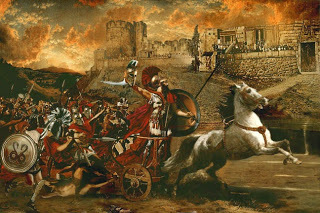
1184 BC Trojan War: Troy was sacked and burned, according to calculations by Eratosthenes.
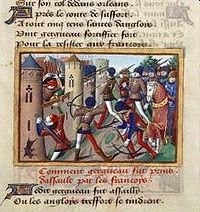
1429 Hundred Years' War: start of the Battle of Jargeau, Joan of Arc's first offensive battle.

1509 Henry VIII of England married Catherine of Aragon, his brother Arthur's widow.

1184 BC Trojan War: Troy was sacked and burned, according to calculations by Eratosthenes.

1429 Hundred Years' War: start of the Battle of Jargeau, Joan of Arc's first offensive battle.

1509 Henry VIII of England married Catherine of Aragon, his brother Arthur's widow.
Published on June 11, 2015 02:30
June 10, 2015
History Trivia - Alexander the Great dead at age 32
June 10
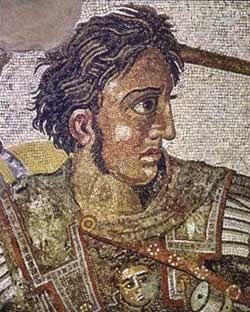
323 BC (or June 11) Alexander the Great, Macedonian king, died from either fever or excessive wine at the age of 32.

1190 Holy Roman Emperor Frederick Barbarossa drowned while crossing a river on a crusade to the Holy Land.
1540 Tho mas Cromwell arrested in Westminster after falling out of favor with Henry VIII for having arranged the King's marriage to Anne of Cleves, which was quickly annulled.
mas Cromwell arrested in Westminster after falling out of favor with Henry VIII for having arranged the King's marriage to Anne of Cleves, which was quickly annulled.

323 BC (or June 11) Alexander the Great, Macedonian king, died from either fever or excessive wine at the age of 32.

1190 Holy Roman Emperor Frederick Barbarossa drowned while crossing a river on a crusade to the Holy Land.
1540 Tho
 mas Cromwell arrested in Westminster after falling out of favor with Henry VIII for having arranged the King's marriage to Anne of Cleves, which was quickly annulled.
mas Cromwell arrested in Westminster after falling out of favor with Henry VIII for having arranged the King's marriage to Anne of Cleves, which was quickly annulled.
Published on June 10, 2015 02:00
June 9, 2015
Author Kim Scott Fundraiser Facebook Event for Sarcoidosis Research - June 12 - July 1, 2015
 My name is Kim Scott & I'm an author from Maine. Most of my friends know I have Stage 4 a-typical Pulmonary Sarcoidosis attacking my lungs. There is no cure and the treatment plans are primarily experimental.
My name is Kim Scott & I'm an author from Maine. Most of my friends know I have Stage 4 a-typical Pulmonary Sarcoidosis attacking my lungs. There is no cure and the treatment plans are primarily experimental.I've done chemo, IV therapy, injections, and massive doses of steroids. Last week I started the last treatment option available for me. More research is desperately needed. I refuse to give up so I'm throwing an online fundraiser! The proceeds will go to the Foundation for Sarcoidosis Research. Join the Event at: https://www.facebook.com/events/1437745826532172/
Authors, Book Professionals, Direct Sales Representatives & anyone else will to participate or contribute a single book or something more... I need your help. ♥
Any consultants with Mary Kay, Pampered Chef, Jamberry Nails, etc, I would be thrilled if you would participate. I will be covering Tupperware & Avon participation with 40% of each order being donated to the Foundation for Sarcoidosis Research.
If you're interested in participating in this fundraiser please email me at: KimScottForYou@gmail.com
Please invite your friends who might be willing to participate. There will be an online auction on Saturday June 20th.
This fundraiser will run June 12 to July 1.
For more information about Sarcoidosis visit the Foundation for Sarcoidosis Research at: https://www.stopsarcoidosis.org/
Money can't buy happiness but maybe it can buy some hope. hope. https://www.facebook.com/events/1437745826532172/
Published on June 09, 2015 15:11
Complex Elevator and Trap Door System for Raising Wild Animals into the Colosseum Reconstructed
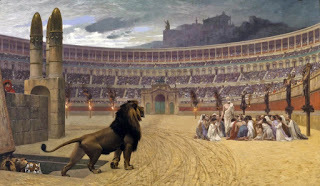 Ancient Origins
Ancient OriginsMany thousands of people suffered violent deaths in the gladiatorial contests of the Colosseum and other arenas of the ancient Roman empire. Innumerable animals killed and were killed in the blood-thirsty games, forced into the arena through an advanced system of tunnels, cages, lifts, and trap-doors. Now archaeologists have reconstructed this complex system in Rome’s Colosseum, bringing to life the ingenious equipment used in the gory games of the Roman Empire.
The slaughter of innocent beasts, including lions, tigers, giraffes, bulls, elephants, hippopotami, bears, wolves and jaguars, was so bad that populations of some animals dropped precipitously in some of their ranges. Experts have estimated that up to 1 million large carnivores and other beasts died in the Roman games at various venues over the years.
The incredible system invented by the Romans to raise animals into the arena was reconstructed for the U.S. Public Broadcasting System program titled Colosseum: Roman Death Trap . The lift is made of wood and is 7 meters (23 feet) high. It can winch up a beast weighing as much as 300 kg (660 pounds). Elephants, hippopotami, and other larger animals were delivered to the arena via another ingress.
The Gladiators of Rome: Blood Sport in the Ancient Empire Gladiator School Discovery Reveals Hard Lives of Ancient Warriors The legendary Spartacus: Gladiator and leader of slaves against the Romans – Part 1
 Reconstructed elevator once used to raise wild animals into the arena of the Colosseum. Screenshot from ‘Colosseum: Roman Death Trap – Releasing the Wolf’.
Reconstructed elevator once used to raise wild animals into the arena of the Colosseum. Screenshot from ‘Colosseum: Roman Death Trap – Releasing the Wolf’. Reconstructed platform showing how wild animals were once raised into the arena of the Colosseum. Screenshot from ‘Colosseum: Roman Death Trap – Releasing the Wolf’.To inaugurate the elevator in the week of June 5, 2015, the crew released a wolf into the arena via the lift. It took eight people to crank the shaft and lift the elevator. In ancient Rome, slaves would have been used for this labor.
Reconstructed platform showing how wild animals were once raised into the arena of the Colosseum. Screenshot from ‘Colosseum: Roman Death Trap – Releasing the Wolf’.To inaugurate the elevator in the week of June 5, 2015, the crew released a wolf into the arena via the lift. It took eight people to crank the shaft and lift the elevator. In ancient Rome, slaves would have been used for this labor."It was the first time that a wild animal had been released into the Colosseum in 1,500 years," said the director of the PBS documentary, Gary Glassman. "I would love to have used a lion, but there were obvious safety issues involved. In the end we chose a wolf because it is the symbol of Rome. One of the reasons we are attracted to the Colosseum is because of the incredible violence that went on here," said the director, standing in blazing sunshine as the trap door to the device opened up. The question it poses is, how could such an advanced culture have staged such bloody spectacles? The Colosseum is a snapshot in stone, a physical embodiment of the culture of Rome."
There were 28 lifts in the arena in ancient times. Hungry, frightened animals would spring out and be faced with either victims, gladiators or gladiator-victims. If the animals were reluctant to fight, they would be goaded into it by men called bestiari.
“The number of lifts here was more than in any other Roman amphitheater and Roman sources talk of 100 lions appearing together,” Rossela Rea, director of the Colosseum, told International Business Times.
Archaeologists rebuilt the lift from ancient texts and clues from the Colosseum itself. They studied bronze fittings, still-visible rope marks on stone and holes carved for wooden posts to see how the ancients built them.
Commodus – the Outrageous Emperor who Fought as a Gladiator Colosseum of Rome, a Condominium in Medieval Times Red-painted numbers helped Romans find their seats in the Colosseum
 The Colosseum in Rome once sported 28 lifts for raising animals into the grand arena. Source: BigStockPhotoThe Colosseum, the largest amphitheater in the Roman Empire, measures 620 by 513 feet (190 by 155 meters). It was a free-standing structure constructed of stone and concrete. All other Roman amphitheaters were built into hillsides for support. The Emperor Vespasian ordered it built on the site of Nero’s burned palace around 70 to 72 A.D. His son, Emperor Titus, was in power when work on the Colosseum was completed in 80 A.D.
The Colosseum in Rome once sported 28 lifts for raising animals into the grand arena. Source: BigStockPhotoThe Colosseum, the largest amphitheater in the Roman Empire, measures 620 by 513 feet (190 by 155 meters). It was a free-standing structure constructed of stone and concrete. All other Roman amphitheaters were built into hillsides for support. The Emperor Vespasian ordered it built on the site of Nero’s burned palace around 70 to 72 A.D. His son, Emperor Titus, was in power when work on the Colosseum was completed in 80 A.D.Titus dedicated that the Colosseum would have 100 days of games, feasts, public executions and naval battles for which the arena was temporarily flooded.
The morning it opened, the crowd saw more than 10,000 animals, including wolves, crocodiles, giraffes and hippopotami. They were paraded before the crowd, some dressed as famous people.
 Rome’s Colosseum. Source: BigStockPhotoGladiatorial contests began in the afternoon. The fights started off semi-fake, like modern professional wrestling matches, with blunt swords or wooden training swords. But soon the matches turned brutal, and the fighters often sustained horrendous injuries. Occasionally, sponsors would pay extra to stage a fight to the death. The crowd drank watered down wine and ate lunch during the games. The carnage was so awful prisoners killed themselves before they were scheduled to fight. Some species of animals were nearly wiped out during the spectacles.
Rome’s Colosseum. Source: BigStockPhotoGladiatorial contests began in the afternoon. The fights started off semi-fake, like modern professional wrestling matches, with blunt swords or wooden training swords. But soon the matches turned brutal, and the fighters often sustained horrendous injuries. Occasionally, sponsors would pay extra to stage a fight to the death. The crowd drank watered down wine and ate lunch during the games. The carnage was so awful prisoners killed themselves before they were scheduled to fight. Some species of animals were nearly wiped out during the spectacles.Featured image: Wild carnivorous animals emerge from a trap door into the Colosseum. ‘The Christian Martyrs' Last Prayer, by Jean-Léon Gérôme, 1883. ( Wikimedia Commons ).
Published on June 09, 2015 07:57
Ancient Trade Route reveals Prehistoric Inhabitants of Ireland preferred Exotic Gold
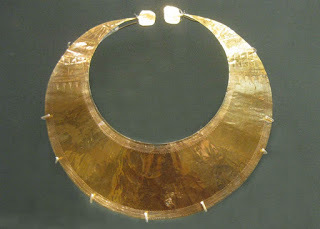 Ancient Origins
Ancient OriginsA new study using scientific methods to examine where Irish gold came from has found that there may have been trade between Ireland and southwest England about 4,500 years ago. Scientists speculate that people in England may have traded gold to Irish people for what the English considered more valuable commodities. But the Irish may have put a special, esoteric premium on the fabled mineral.
“This implies gold was leaving the region because those who found it felt it was of more value to trade it in for other ‘desirable’ goods, rather than keep it,” said Chris Standish of the University of Southampton. He is co-author of a new article in the journal Proceedings of the Prehistoric Society that explains research into determining the origin of gold in Ireland to its source—Cornwall.
In some ancient societies, gold was a major part of belief systems and was thought to have supernatural and magical powers. It was considered more of a supernatural than an economic substance. There is no way to know whether this was true in Ireland 4,500 years ago due to the absence of written records.
But co-author Alistair Pike said: “'The results of this study are a fascinating finding. They show that there was no universal value of gold, at least until perhaps the first gold coins started to appear nearly two thousand years later. Prehistoric economies were driven by factors more complex than the trade of commodities – belief systems clearly played a major role.”
Did ancient gold mining methods create REAL Golden Fleece and inspire legend of Jason and the Argonauts?Mold Gold Cape is the finest piece of prehistoric gold-working in EuropeAmazing Find with a Metal Detector - The Incredible Staffordshire Anglo-Saxon Gold Hoard
 A piece from the Broighter Gold Hoard now in the National Museum of Ireland (Photo by Ardfern/
Wikimedia Commons
)The study rules out an Irish source for the gold despite easily accessible and rich Irish deposits. The abstract states:
A piece from the Broighter Gold Hoard now in the National Museum of Ireland (Photo by Ardfern/
Wikimedia Commons
)The study rules out an Irish source for the gold despite easily accessible and rich Irish deposits. The abstract states:A non-Irish source for the gold is preferred– a scenario that may favour cosmologically driven acquisition, i.e., the deliberate procurement of a material from distant or esoteric sources. Available geochemical data, combined with current archaeological evidence, favour the alluvial deposits of south-west Britain as the most likely source of the gold.”Standish explained: “It is unlikely that knowledge of how to extract gold didn’t exist in Ireland, as we see large scale exploitation of other metals. It is more probable that an exotic origin was cherished as a key property of gold and was an important reason behind why it was imported for production.”
The book Treasuries of Irish Art: 1500 BC to 1500 AD Ireland has the richest collection of prehistoric gold ornaments in western or central Europe. “The gold ornaments are remarkable for their striking beauty—the simplicity of their shapes and geometrical decoration,” it states.
 The "Great Torc" from the English Snettisham Hoard, 1st century BC. (
Wikimedia Commons
)The book says the most popular shape for gold pieces in Ireland in the early Bronze Age was the half-moon or lunula. Lunulae were made of thin sheets of hammered gold and the ends, or horns, incised with designs.
The "Great Torc" from the English Snettisham Hoard, 1st century BC. (
Wikimedia Commons
)The book says the most popular shape for gold pieces in Ireland in the early Bronze Age was the half-moon or lunula. Lunulae were made of thin sheets of hammered gold and the ends, or horns, incised with designs.The new study overturns many decades of belief that early Bronze Age Irish gold pieces were made from Irish gold. Treasuries of Irish Art says the gold in those pieces likely came from gold nuggets in the Avoca River and other rivers in County Wicklow.
Pike and Standish examined lead isotopes in minuscule fragments and compared the Irish gold works in the Museum of Ireland to gold from several locations, concluding it came from Cornwall.
Featured image: A gold lunula from County Wicklow. The piece, dating from 2400 BC to 2000 BC, is in the British Museum. Note the decorations etched into the ends or horns of the lunula. ( Wikimedia Commons )
Published on June 09, 2015 07:53
Five Huge Bronze Age axes discovered in a field in Jutland, Denmark
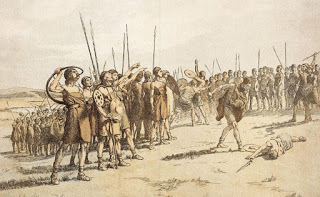 Ancient Origins
Ancient OriginsFive Bronze Age axes, twice the size of those normally discovered, have been discovered in a field near Boest, near Nørre Snede in Jutland, Denmark. The axes have been dated to 1600 BC, which means they are one of the earliest Bronze Age finds in Denmark.
The first pair of axes were discovered by the brother-in-law of a pine tree farmer who was about to plant his new crop. When archaeologists visited the site, they found three more. The discovery has attracted archaeologists from all over, drawn to a hugely important find.
The axe heads contain two pounds of pure metal and are 12 inches (30 centimeters) wide. The farmer who owns the field, Esben Arildskov, asked his brother-in-law to use a metal detector in the field before he started planting, as he didn’t wanted to destroy anything with any historical value.
 Image of the Axe heads found at the site. 2015 (
sciencenordic.com
)“Five such Bronze Age axes have been found in all Northern Europe to date, and then we go and five more in one go. That's fantastic” said archaeologist Constanze Rassmann, speaking to the Science Nordic website. Ms Rassmann is the curator of the Museum Midtjylland in Denmark and she strongly suspects the axes were deposited deliberately as an offering to the gods. The main reason for this is that they were deposited next to and on top of each other. Furthermore, on the same site, the archaeologists found evidence indicating the former existence of four rows of wooden posts, each post the height of a man, stretching for a distance of at least 100 metres (328.084 feet) across the landscape. The posts eventually disappear into woodland but the archaeologists are hoping to conduct a thorough excavation at a later date in order to find out more about them.
Image of the Axe heads found at the site. 2015 (
sciencenordic.com
)“Five such Bronze Age axes have been found in all Northern Europe to date, and then we go and five more in one go. That's fantastic” said archaeologist Constanze Rassmann, speaking to the Science Nordic website. Ms Rassmann is the curator of the Museum Midtjylland in Denmark and she strongly suspects the axes were deposited deliberately as an offering to the gods. The main reason for this is that they were deposited next to and on top of each other. Furthermore, on the same site, the archaeologists found evidence indicating the former existence of four rows of wooden posts, each post the height of a man, stretching for a distance of at least 100 metres (328.084 feet) across the landscape. The posts eventually disappear into woodland but the archaeologists are hoping to conduct a thorough excavation at a later date in order to find out more about them.The Surprising and Iconic Bronze Age Egtved Girl: Teenage Remains Tell a Story of Trade and Travel The Bronze Age Srubna Culture and their Unique Timber Graves for the Dead Bronze Age gold rings of a high-status person found in Wales
 Constanze Rassman holding one of the bronze axes found at the site. 2015. (
sciencenordic.com
)Rassmann told a local newspaper in Skanderborg that, to date, only five other axes from the same period have been found across Germany, Denmark and Sweden. It is this that makes the finding of these axe heads such a ground-breaking discovery.
Constanze Rassman holding one of the bronze axes found at the site. 2015. (
sciencenordic.com
)Rassmann told a local newspaper in Skanderborg that, to date, only five other axes from the same period have been found across Germany, Denmark and Sweden. It is this that makes the finding of these axe heads such a ground-breaking discovery. Bronze Age swords and other artifacts in the Nationalmuseet (National Museum) in Copenhagen, Denmark. Photo by Simon Burchell, 2011. (
Wikimedia Commons
)French antiquary Mahudel was the first to note that bronze items were generally found in graves and from this he proposed that discoveries of stone, bronze and iron items could be dated according to a particular sequence. This idea was subsequently adopted by English antiquaries, notably William Borlase (1696-1772) and the chronology had become generally accepted by the end of the eighteenth century. It was later called the ‘Three Age’ system of classification by Danish archaeologists.
Bronze Age swords and other artifacts in the Nationalmuseet (National Museum) in Copenhagen, Denmark. Photo by Simon Burchell, 2011. (
Wikimedia Commons
)French antiquary Mahudel was the first to note that bronze items were generally found in graves and from this he proposed that discoveries of stone, bronze and iron items could be dated according to a particular sequence. This idea was subsequently adopted by English antiquaries, notably William Borlase (1696-1772) and the chronology had become generally accepted by the end of the eighteenth century. It was later called the ‘Three Age’ system of classification by Danish archaeologists.The Bronze Age in Britain began around 2,000 BC and the period is marked by the introduction of bronze tools and weapons from the European mainland. Bronze is formed from the combination of a small amount of tin (around 10 percent) with the remaining metal (90 percent) being copper. The Bronze Age in southern Europe began on the island of Crete which acted as a base for the export of bronze items to Europe. The first bronze weapons were crafted by the Mycenaean culture of Greece. The Mycenaeans originally came from Russia. When they arrived in Greece they began to trade with the Minoans. The Bronze Age was introduced into Britain by the ‘Beaker People’ named after their bell-shaped ‘beaker’ pottery.
Scandinavian Bronze Age peoples joined their other European counterparts later in history through trade in which ships played an important part. Rock carvings across Scandinavia depict these ships and tombs and burial monuments consisting of individual standing stones were often laid out in the form of a boat or ship. The most well-known of these monuments include Ale’s Stones in southern Sweden, Anundshög (also in Sweden), Kerteminde fjord in Denmark and Altes Lager Menzlin near Anklam in Western Pomerania, Germany.
Archaeologists discover Bronze Age palace and huge trove of grave goods in Spain 3000-year-old bronze sword discovered in China A rich Celtic Iron Age tomb discovered with stunning artifacts
 Two of the Viking stone ships (burial grounds) at Badelunda, near Västerås, Sweden. Photo by Berig 2005. (
en.wikipedia.org
)The Nordic Bronze Age began during a period of climate change around 2700 BC which encouraged a dense population and a rich agricultural economy, including the cultivation of grapes in Sweden and millet in Denmark. Written sources from this period are rare but stone carvings indicate the veneration of a pair of twin gods including a mother goddess figure. Sacrifices of animals, weapons, personal items and humans were sometimes made, usually near water. The stone carvings include early depictions of deities that may have been early manifestations of the later Viking gods, such as Thor, Odin and Tyr. Another figure, holding a bow, may have represented the god Ullr.
Two of the Viking stone ships (burial grounds) at Badelunda, near Västerås, Sweden. Photo by Berig 2005. (
en.wikipedia.org
)The Nordic Bronze Age began during a period of climate change around 2700 BC which encouraged a dense population and a rich agricultural economy, including the cultivation of grapes in Sweden and millet in Denmark. Written sources from this period are rare but stone carvings indicate the veneration of a pair of twin gods including a mother goddess figure. Sacrifices of animals, weapons, personal items and humans were sometimes made, usually near water. The stone carvings include early depictions of deities that may have been early manifestations of the later Viking gods, such as Thor, Odin and Tyr. Another figure, holding a bow, may have represented the god Ullr.The axe heads found at the Boest site have now been taken to Museum Midtjylland so that conservation work can be carried out on them. When this is complete they will be taken to the National Museum of Denmark in Copenhagen.
Featured Image: Denmark during the Bronze Age. Image by: State Danish Archives. 2013. ( Wikimedia Commons )
Published on June 09, 2015 07:48
Ancient Roman Tunnel from Gladiator Training School to Colosseum set to be Revived
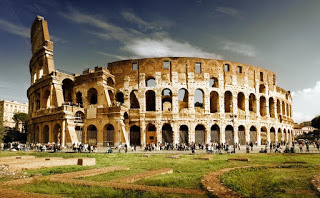 Ancient Origins
Ancient OriginsAuthorities hope to preserve some ancient Roman history with the restoration of a tunnel that runs from a gladiator training school to the Colosseum, where brutal gladiatorial bouts took place. Parts of the school are exposed to the air now and are littered with trash.
The training school was called the Ludus Magnus or Great Gladiatorial Training School. It is near the Colosseum, between two busy roads. Thousands of people pass the site of the school's ruins every day and are able to look down on it.
There were other gladiator training schools in ancient times, but the Ludus Magnus was the biggest and most famous. For many years gladiators lived and trained there.
 The Ludus Magnus from the Via Labicana (Photo by Jastrow/
Wikimedia Commons
)The Kuwaiti government has offered to finance the restoration of the tunnel, but the school itself is not yet slated for restoration, though officials want to, according to a story in
The Telegraph
.
The Ludus Magnus from the Via Labicana (Photo by Jastrow/
Wikimedia Commons
)The Kuwaiti government has offered to finance the restoration of the tunnel, but the school itself is not yet slated for restoration, though officials want to, according to a story in
The Telegraph
.It's not possible to enter the Ludus Magnus now, but perhaps restoration of the tunnel will give access to it for archaeologists and preservationists in the future if Italy, other governments, or corporations donate money to finance restoration.
The Ludus Magnus was built between 81 and 96 AD by Emperor Domitian and rebuilt again later by Trajan. Gladiators underwent rigorous training there to prepare for the games.
The Gladiators of Rome: Blood Sport in the Ancient Empire Gladiator School Discovery Reveals Hard Lives of Ancient Warriors The legendary Spartacus: Gladiator and leader of slaves against the Romans – Part 1
 Example of a tunnel through which gladiators entered a colosseum. This one is from the largest colosseum in North Africa. El Jem, Tunisia. Source: BigStockPhotoIn Feburary 2014, archaeologists revealed the almost complete remains of a Roman school of gladiators on the banks of the Danube in Austria and used sophisticated 3D reconstruction techniques to bring to life the ancient gladiator school where famed warriors lived, trained and fought.
Example of a tunnel through which gladiators entered a colosseum. This one is from the largest colosseum in North Africa. El Jem, Tunisia. Source: BigStockPhotoIn Feburary 2014, archaeologists revealed the almost complete remains of a Roman school of gladiators on the banks of the Danube in Austria and used sophisticated 3D reconstruction techniques to bring to life the ancient gladiator school where famed warriors lived, trained and fought.The find at the site of Carnuntum outside Vienna is the first ludus gladiatorius (gladiator training school) found outside the cities of Rome and Pompeii (which had small, private gladiatorial grounds). Although it is believed that more than 100 ludi existed in the Roman Empire, almost all of them have been destroyed or built over, making it impossible to piece together the ancient structures.
However, a research team from Austria, Belgium and Germany used the latest non-invasive technologies, including aerial surveys, electromagnetic induction, and ground-penetrating radar to reconstruct the 2nd century gladiator school, which lies hidden beneath a field.
The results revealed that ancient Rome’s gladiators lived and trained in fortress prisons. The large, two-story facility, which would have held at least 80 gladiators, was equipped with a practice arena in a central courtyard. The site also included heated floors for winter training, baths, infirmaries, plumbing, and a nearby graveyard. The gladiators slept in 3-square-meter (3.2 square yards) cells, home to one or two people. Those cells were kept separate from a wing holding bigger rooms for their trainers, known as magistri, themselves retired survivors of gladiatorial combat who specialized in teaching one style of weaponry and fighting.
Gladiators were often prisoners of war and slaves, supplied through Rome’s wars. The use of Rome’s defeated enemies in these games is reflected in some of the gladiator types, including the Thraex (or Thracian), the Hoplomachus and the Samnite. Gladiatorial combats were a way for the Romans to re-enact the wars that they had with their conquered subjects.
Commodus – the Outrageous Emperor who Fought as a Gladiator Colosseum of Rome, a Condominium in Medieval Times Red-painted numbers helped Romans find their seats in the Colosseum
 Two Venatores (those who made a career out of fighting in arena animal hunts) fighting a tiger. Floor mosaic in Great Palace of Constantinople (Istanbul), 5th century.
Public Domain
Not all gladiators were forced into the games. Despite the hard and precarious life, gladiators were the superstars of their day. The benefits to be found in fighting in the arena – fame, glory and fortune, were strong enough to entice some people to become gladiators voluntarily. Some Roman emperors even participated in gladiatorial games themselves, the most famous of whom was probably the emperor Commodus. The participation of emperors in these games, however, was scorned by some, as gladiators belonged to the lowest of social classes.
Two Venatores (those who made a career out of fighting in arena animal hunts) fighting a tiger. Floor mosaic in Great Palace of Constantinople (Istanbul), 5th century.
Public Domain
Not all gladiators were forced into the games. Despite the hard and precarious life, gladiators were the superstars of their day. The benefits to be found in fighting in the arena – fame, glory and fortune, were strong enough to entice some people to become gladiators voluntarily. Some Roman emperors even participated in gladiatorial games themselves, the most famous of whom was probably the emperor Commodus. The participation of emperors in these games, however, was scorned by some, as gladiators belonged to the lowest of social classes. Carving showing a Roman Emperor presiding over gladiatorial games (
Wikimedia Commons
)Despite the low social status of gladiators, they had the potential to gain the patronage of the upper classes, even that of the emperor. According to the ancient Roman historian Suetonius, the emperor Nero awarded a gladiator, Spiculus, with houses and estates worthy of generals returning triumphantly from a war.
Carving showing a Roman Emperor presiding over gladiatorial games (
Wikimedia Commons
)Despite the low social status of gladiators, they had the potential to gain the patronage of the upper classes, even that of the emperor. According to the ancient Roman historian Suetonius, the emperor Nero awarded a gladiator, Spiculus, with houses and estates worthy of generals returning triumphantly from a war.Gladiatorial contests began in the afternoon. The fights started off semi-fake, like modern professional wrestling matches, with blunt swords or wooden training swords. But soon the matches turned brutal, and the fighters often sustained horrendous injuries. Occasionally, sponsors would pay extra to stage a fight to the death. The crowd drank watered down wine and ate lunch during the games.
The carnage was so awful some prisoners killed themselves before they were scheduled to fight. People killed in the games included prisoners of war and criminals.
Some species of animals were nearly wiped out during the spectacles. Numbers of lions, jaguars, tigers and North African elephants dropped precipitously, and hippopotami disappeared from the Nile River.
The Ludus Magnus in Rome consisted of barracks, a training arena, a few stands and storage rooms. Kuwait has offered $2.3 million to restore the tunnel, leading to it from the Colosseum.
"We are in talks with Kuwait, one of several countries that has shown an interest in investing in Rome's cultural heritage," said a Rome city council spokesman. “For many years the area around the gladiator school has been rather forgotten, and impossible to visit. We hope to make some significant improvements and restructure the whole zone."
Italian officials are seeking governmental and private support to restore Italy's wonderful archaeological heritage. Several projects are underway with corporate help, including repairs and cleaning of the Spanish Steps, Trevi Fountain, the Colosseum itself and other projects in other Italian cities.
Featured image: The Colosseum in Rome. Source: BigStockPhotos
Published on June 09, 2015 07:43
History Trivia - Roman emperor Nero deposed
June 9
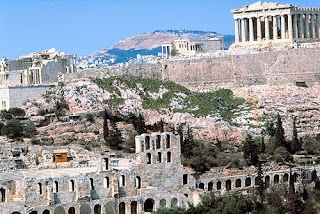
411 BC Coup in Athens succeeded, forming a short-lived oligarchy.
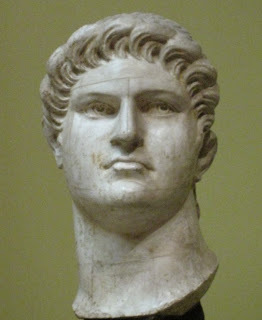
68 The Roman emperor Nero was deposed and committed suicide, ending the Julian-Claudian imperial dynasty.

1549 Thomas Cranmer, Archbishop of Canterbury, issued The Protestant Book of Common Prayer, sparking a Catholic peasant rebellion.

411 BC Coup in Athens succeeded, forming a short-lived oligarchy.

68 The Roman emperor Nero was deposed and committed suicide, ending the Julian-Claudian imperial dynasty.

1549 Thomas Cranmer, Archbishop of Canterbury, issued The Protestant Book of Common Prayer, sparking a Catholic peasant rebellion.
Published on June 09, 2015 02:30
June 8, 2015
Brooklyn and Bo Chronicles by Brenda Perlin: Scribbler Tales: A Collection of Short Stories (Vo...
Brooklyn and Bo Chronicles by Brenda Perlin: Scribbler Tales: A Collection of Short Stories (Vo...: Scribbler Tales: A Collection of Short Stories (Volume Five) In her quest for immortality, Lilly considers a Satanic covenant ...

My Review
Mary Ann Bernal’s Scribbler Tales Volume Five is filled with smart, suspenseful, riveting, and edge of your seat stories. Each one is a gem upon itself. I enjoyed their twists that I didn’t see coming. Very unique pieces that took me outside myself and welcomed into extraordinary adventures.
Bloodlust starts this thrill ride off in a bang. There is an intensity to the story that made me want to read at a faster pace. Grabbing and imaginative.
In Illusion, we travel to another country, the Ancient City of Thebes where romance is a must! Though Felicity could not believe her good luck, she would have to re-think that. Could this man be too good to be true? Then in Manhunt, another dark story which is swift and moves like lightning. As sinister as they get.
Pandemic is a surprising story that captivated my senses. Loved the mystery and the dark side of life which reminds you that anything is possible.
Revenge rounds this novel up nicely. A wicked tale of deceit and nothing is as it seems. A smart thriller that pulls you right in.
All these tales reads like a clever mystery suspense movie in living color. A page turner that was comfy to cosy up to on a chilly winters night. Love this stunning series.
Mary Ann Bernal webpage

My Review
Mary Ann Bernal’s Scribbler Tales Volume Five is filled with smart, suspenseful, riveting, and edge of your seat stories. Each one is a gem upon itself. I enjoyed their twists that I didn’t see coming. Very unique pieces that took me outside myself and welcomed into extraordinary adventures.
Bloodlust starts this thrill ride off in a bang. There is an intensity to the story that made me want to read at a faster pace. Grabbing and imaginative.
In Illusion, we travel to another country, the Ancient City of Thebes where romance is a must! Though Felicity could not believe her good luck, she would have to re-think that. Could this man be too good to be true? Then in Manhunt, another dark story which is swift and moves like lightning. As sinister as they get.
Pandemic is a surprising story that captivated my senses. Loved the mystery and the dark side of life which reminds you that anything is possible.
Revenge rounds this novel up nicely. A wicked tale of deceit and nothing is as it seems. A smart thriller that pulls you right in.
All these tales reads like a clever mystery suspense movie in living color. A page turner that was comfy to cosy up to on a chilly winters night. Love this stunning series.
Mary Ann Bernal webpage
Published on June 08, 2015 07:20
Book Launch - Scribbler Tales (Volume Five) by Mary Ann Bernal

In her quest for immortality, Lilly considers a Satanic covenant before the portal closes on All Hallows’ Eve in Bloodlust. When Felicity meets exotic Seth on a flight to Luxor, her fairy tale vacation is threatened by tomb robbers in Illusion. Manhuntfinds Tami and Mick suspecting the newest member of their team while planning one final heist at the Diamond Exchange. Dr. Brenda Lancaster must develop a cure for a mutated pathogen before mankind becomes extinct in Pandemic. Angela plots her husband’s death in Revenge,unaware it may cost her the freedom she seeks.
Amazon US
Amazon UK
Published on June 08, 2015 04:00



